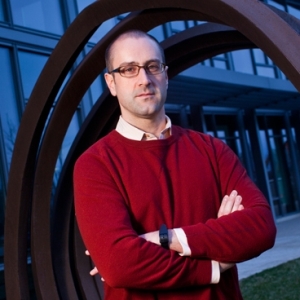DNA form building blocks for nano-structures for drug delivery serve as biosensors and enable artificial photosynthesis.
Around five years ago, Paul Rothemund, computational bioengineer at Caltech, developed DNA origami, which involved creating two-dimensional shapes from a folded DNA strand and tied with short staple strands. William Shih’s lab at Harvard Medical School later applied this idea to three-dimensions, enabling complicated curved and slanted shapes for nano-sized artificial biological designs.
 MIT's Samuel A. Goldblith Assistant Professor of Applied Biology, Mark Bathe
MIT's Samuel A. Goldblith Assistant Professor of Applied Biology, Mark Bathe
Biological engineer, Mark Bathe has led a team at MIIT that has created software that could predict the three-dimensional shape ensuing from a specific DNA template. This does not automate the design process, but enables designers to develop complicated three-dimensional shapes, monitoring their flexibility and folding stability. Bathe says the technology needs to be made completely automatic without requiring human input in order to help designers who have had no prior experience or awareness of DNA structuring.
The research paper has appeared in the February 25 edition of Nature Methods, which offers insights on developing DNA origami in collaboration with Hendrik Dietz at the Technische Universitaet Muenchen.
DNA comprises a string of four nucleotide bases A, T, G and C, which render the molecule easily programmable. A attaches only with T and G only with C. These sequences can be designed to self assemble and fold into particular shapes, bringing different strands together to create bigger shapes.
Rothemund’s strategy is based on folding a long DNA strand in two sizes. He used a genome comprising around 8000 nucleotides to design two-dimensional stars, triangles and smiley faces. This provides a scaffold for the remaining shape.
Bathe’s software interfaces with one from Shih’s lab called caDNAno, which enables designers to manually develop scaffolded DNA origami with a two-dimensional design. The CanDo program combines caDNAno’s two-dimensional plan and foretells the final three-dimensional shape that is unintuitive, since the flexible DNA twists, bends and stretches while folding to form a complex three-dimensional structure.